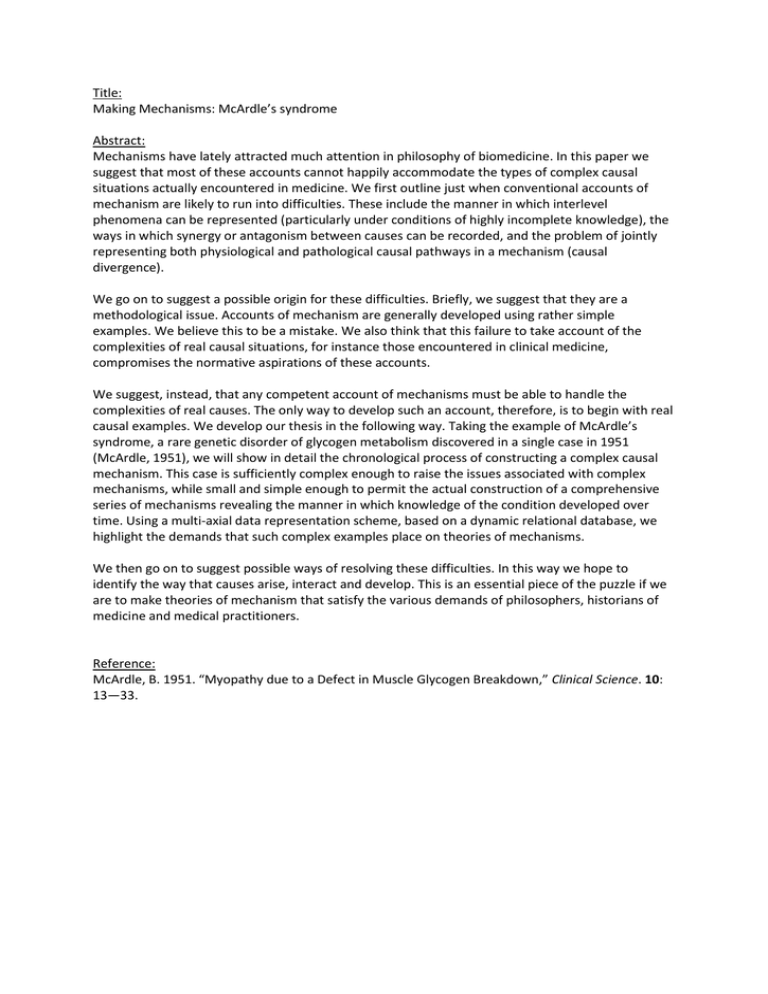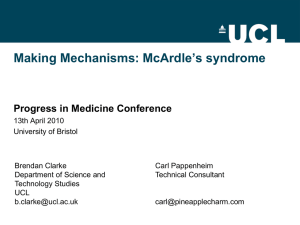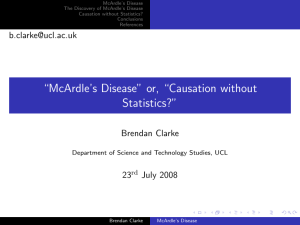Title: Making Mechanisms: McArdle’s syndrome Abstract:
advertisement

Title: Making Mechanisms: McArdle’s syndrome Abstract: Mechanisms have lately attracted much attention in philosophy of biomedicine. In this paper we suggest that most of these accounts cannot happily accommodate the types of complex causal situations actually encountered in medicine. We first outline just when conventional accounts of mechanism are likely to run into difficulties. These include the manner in which interlevel phenomena can be represented (particularly under conditions of highly incomplete knowledge), the ways in which synergy or antagonism between causes can be recorded, and the problem of jointly representing both physiological and pathological causal pathways in a mechanism (causal divergence). We go on to suggest a possible origin for these difficulties. Briefly, we suggest that they are a methodological issue. Accounts of mechanism are generally developed using rather simple examples. We believe this to be a mistake. We also think that this failure to take account of the complexities of real causal situations, for instance those encountered in clinical medicine, compromises the normative aspirations of these accounts. We suggest, instead, that any competent account of mechanisms must be able to handle the complexities of real causes. The only way to develop such an account, therefore, is to begin with real causal examples. We develop our thesis in the following way. Taking the example of McArdle’s syndrome, a rare genetic disorder of glycogen metabolism discovered in a single case in 1951 (McArdle, 1951), we will show in detail the chronological process of constructing a complex causal mechanism. This case is sufficiently complex enough to raise the issues associated with complex mechanisms, while small and simple enough to permit the actual construction of a comprehensive series of mechanisms revealing the manner in which knowledge of the condition developed over time. Using a multi-axial data representation scheme, based on a dynamic relational database, we highlight the demands that such complex examples place on theories of mechanisms. We then go on to suggest possible ways of resolving these difficulties. In this way we hope to identify the way that causes arise, interact and develop. This is an essential piece of the puzzle if we are to make theories of mechanism that satisfy the various demands of philosophers, historians of medicine and medical practitioners. Reference: McArdle, B. 1951. “Myopathy due to a Defect in Muscle Glycogen Breakdown,” Clinical Science. 10: 13—33.





